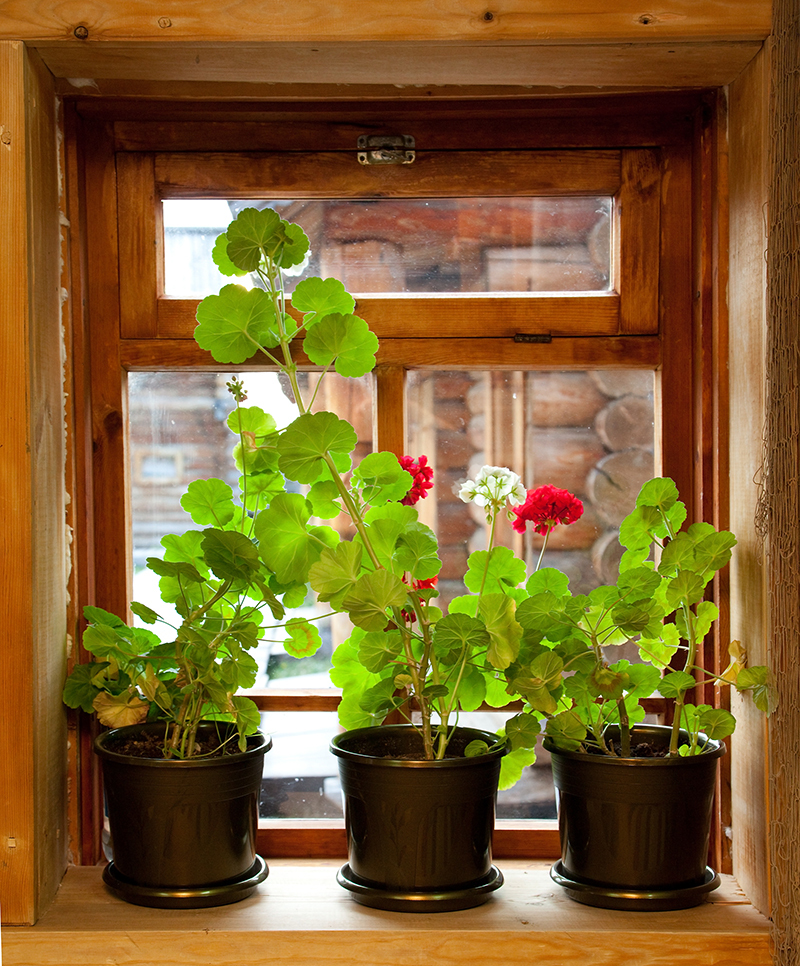Unveiling Orchid Care Secrets
Posted on 02/07/2025
Unveiling Orchid Care Secrets: The Ultimate Guide to Growing Beautiful Orchids
Orchids are renowned for their stunning, exotic blooms and intriguing allure, making them among the most coveted houseplants in the world. Yet, many plant lovers find orchid care intimidating due to their unique needs and mystique. In this comprehensive guide, we will unravel the well-guarded secrets of caring for orchids, providing you with practical advice and expert tips to help your orchids thrive and bloom year after year. Whether you are a beginner or a seasoned enthusiast, these tips will empower you to master the art of orchid cultivation.

Understanding Orchid Basics
Before diving into specific care tips for orchids, it is essential to grasp a few basic facts about these alluring plants. Orchids are members of the family Orchidaceae, one of the largest families in the plant kingdom, with over 25,000 species worldwide. While some are terrestrial, the vast majority of orchids are epiphytes--plants that grow on trees in the wild, using their roots for support rather than nourishment. This unique adaptation greatly influences how we should care for orchids at home.
Popular Types of Orchids for Home Growers
- Phalaenopsis (Moth Orchid): The most popular and easy-to-grow orchid--ideal for beginners.
- Cattleya: Known for large, fragrant blooms and vivid colors.
- Dendrobium: Diverse in form, with intricate flowers and varied care requirements.
- Oncidium: Sometimes called "dancing ladies" for their unique floral structure.
- Vanda: Highly prized for their spectacular and showy flowers.
Whichever type you choose, understanding their origins can unlock many orchid care secrets.
The Fundamentals of Orchid Care
1. Light: The Key to Healthy Orchids
Proper lighting is crucial in the care of orchids. Most orchids need bright, indirect light to thrive. While natural sunlight is preferred, direct sun can scorch leaves. Here's how to get it right:
- Eastern or western-facing windows are ideal for most orchids, especially Phalaenopsis and Cattleya species.
- Avoid harsh midday sun by using sheer curtains, especially in southern exposures.
- Leaf color is a clue: Healthy orchid leaves should be bright green. Dark leaves suggest too little light, while yellowish or reddish tones mean too much light.
Bonus Tip: Some orchids (especially Vanda and Dendrobium) enjoy more light and do well under grow lights if natural conditions aren't perfect.
2. Watering: Mastering the Art of Moisture
One of the most guarded secrets for successful orchid care is proper watering. Overwatering is the number one killer of orchids! Here's how to avoid common mistakes:
- Let the potting medium dry out partially between waterings. Insert a finger about an inch into the medium--if it feels dry, water.
- Use tepid, not cold, water and water early in the day to allow foliage to dry before night.
- Avoid water accumulation at the crown (where leaves meet stems) to prevent rot.
- In the growing season (spring-summer), orchids often need more water than in winter.
Orchids prefer to dry out a bit--it mimics their wild, epiphytic habitats where rain is followed by periods of dryness.
3. Humidity: Creating a Moist Haven
Orchids flourish in humidity levels between 40-60%. Unfortunately, indoor environments, especially with central heating or air conditioning, are typically too dry. To increase orchid humidity:
- Set orchids on a humidity tray filled with pebbles and water (make sure roots do not sit in water).
- Mist plants lightly in the morning, avoiding excessive wetness.
- Group orchids together to create a microclimate of higher moisture.
Pro Tip: Avoid placing orchids too close to heat vents or air conditioners, as direct air flow dries the plants rapidly.
4. Temperature: Keeping Orchids Comfortable
Temperature preferences vary across different types of orchids, but most thrive within these ranges:
- Daytime: 65-80?F (18-27?C)
- Nighttime: 55-65?F (13-18?C)
Many orchids also require a slight drop in nighttime temperatures (about 10?F) to spur blooming--a little-known orchid flowering secret.
5. Potting Medium: The Best Substrate For Orchids
The days of growing orchids in regular soil are long gone. Modern orchid substrates mimic natural epiphytic environments, promoting root aeration and drainage. Common options include:
- Fir bark chips: Most popular and affordable.
- Sphagnum moss: Retains moisture well; suitable for dry climates or species that need more water.
- Perlite, charcoal, coconut husk: Used to improve drainage and air circulation.
Repot your orchid every 1-2 years to refresh the medium and give roots space to grow.
Expert Orchid Care Techniques
Fertilizing Orchids: Feeding for Blooms
Fertilizing is essential but must be done judiciously. Use a balanced, water-soluble orchid fertilizer (20-20-20 or similar):
- Dilute fertilizer to one-quarter strength and apply weekly ("weakly, weekly" is the golden rule).
- Flush the pot thoroughly with water monthly to prevent salt build-up.
- During active growth (spring and summer), fertilize more often; reduce feeding in fall and winter.
Secret Tip: Some growers alternate between fertilizers high in nitrogen (for foliage) and potassium (for blooms), especially before expected flowering periods.
Pruning and Deadheading: Shaping for Success
Proper pruning can enhance orchid health and encourage reblooming:
- Remove faded blooms by snipping the flower spike about an inch above the node with sterile scissors.
- If the entire stem turns brown, cut it off at the base to allow the plant to conserve energy.
- For single-stem Phalaenopsis: Cut just above the node below the lowest faded flower to potentially spur a secondary spike.
Always sterilize cutting tools to prevent the spread of disease.
Repotting Orchids: When and How
Repot your orchid when you see:
- Roots overflowing the pot
- Potting medium breaking down (becoming mushy or foul-smelling)
- Loss of vigor or blooms
- Remove orchid from the old pot, shake off old medium.
- Trim dead or rotting roots with sterilized scissors.
- Place in a slightly larger pot with fresh medium, positioning the plant so that new growth will rise above the pot's rim.
- Water sparingly at first to allow the orchid to settle and avoid root rot.
Repotting anatomy: Well-aerated roots are white or green; dead roots appear brown or mushy--remove them!
Unlocking Orchid Flowering Secrets
The Myth of the Difficult-to-Bloom Orchid
A common misconception is that orchids are hard to bloom. In truth, the secret to orchid reblooming is meeting their basic needs and triggering their flowering cycles.
Four Revelations for Consistent Orchid Blooms
- Temperature drop: Many orchids, especially Phalaenopsis, require a nightly temperature drop for a few weeks to initiate spike formation.
- Continuous, gentle light: Avoid drastic changes in light intensity, which can stall bud formation.
- Responsible rest period: Some orchids need a short dry spell after blooming. Research your species for specifics.
- Don't overfertilize: Too much nitrogen can lead to leaf growth at the expense of blooms.
Common Orchid Problems and Solutions
1. Root Rot
Overwatering or poor drainage causes roots to rot. Solution: Let roots dry out, trim affected parts, repot in fresh, well-draining medium.
2. Yellow Leaves
Can signal too much sunlight, improper watering, or natural aging. Solution: Adjust light or watering; remove old, yellowed leaves as needed.
3. Pests (Mealybugs, Scale, Spider Mites)
Wipe pests with alcohol-dipped cotton or spray with neem oil. Prevention: Inspect new plants before adding to your collection.
4. No Blooms
Usually the result of insufficient light or no temperature drop. Solution: Provide brighter, indirect light and a nighttime cool period.
Insider Orchid Care Tips from Professionals
- Observe your plants: Notice leaf color, texture, and growth rate to gauge overall health.
- Label your orchids: Each species has its own quirks--keep track to customize care.
- Practice patience: Orchids may take time to bloom, but their flowers can last 2-6 months when conditions are right.
- Never use softened water: It contains salts that harm orchids. Use distilled, rainwater, or filtered water.
- Refresh air circulation: Orchids enjoy a gentle breeze to avoid fungal and bacterial issues.

Frequently Asked Questions About Orchid Care
Do orchids need special pots?
Orchids do best in pots with drainage holes and, for many types, clear plastic pots that let light reach roots and allow you to check moisture levels easily.
Can I grow orchids outdoors?
Yes! If you live in a mild, humid climate free of frost, orchids thrive outdoors in filtered light. Bring them inside at the first sign of cold.
How can I make my orchid re-bloom?
Satisfy all their basic needs (light, water, humidity, temperature), drop the nighttime temperature for several weeks, and withhold fertilizer briefly after the bloom finishes. This will unlock the secret to repeat orchid blooms.
What is the best fertilizer for orchids?
A balanced (20-20-20) fertilizer formulated for orchids is best. Fertilize weakly and flush with water monthly to prevent salt build-up.
Conclusion: Transform Your Orchid Care Journey
Growing and caring for orchids doesn't have to be daunting. By following these time-tested orchid care secrets--mastering light, water, humidity, temperature, and substrate--you'll enjoy vigorous growth and stunning blooms. Remember, even experienced growers learn something new with every orchid species they nurture. Be patient, observe your plants carefully, and celebrate each success on your orchid-growing journey.
Armed with these practical tips and expert insights, you are ready to unveil your own orchid care triumphs. Whether you're striving for your first flowering spike or cultivating a thriving orchid collection, these secrets will lead you to ongoing success and the endless beauty of orchid blooms in your home.
Share your own orchid care stories and tips below--let's grow together!
Latest Posts
Mastering the Art of Hydrangea Maintenance
Vibrant Petals for a Memorable Birthday
Transform Your Workspace with the Best Low Maintenance Office Plants
Your birth flower holds secrets about you, find out its symbolic message






